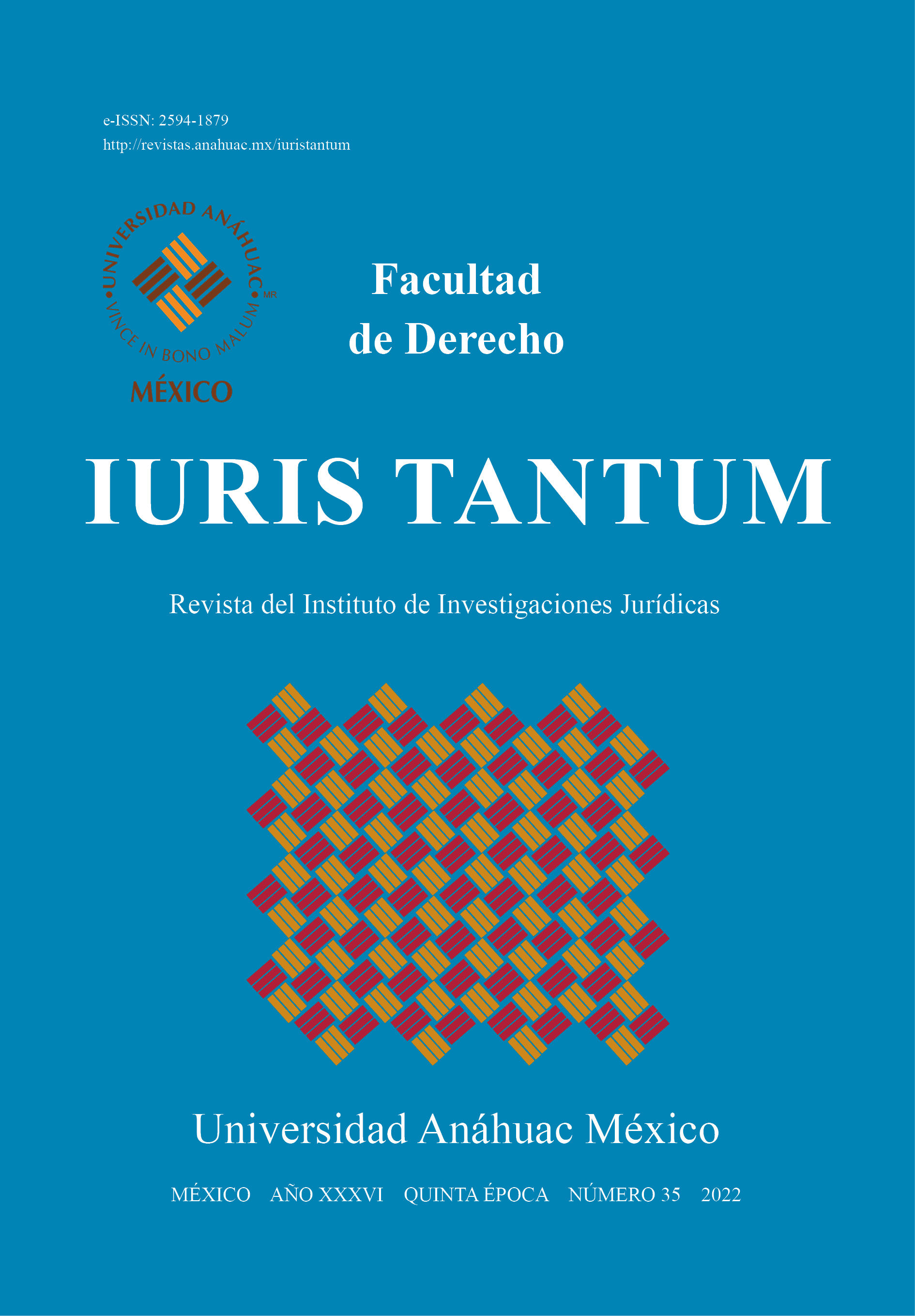Human mobility: International Protection Perspective
Main Article Content
Abstract
Forced displacement and migration have significantly increased over the last few years, leading to record numbers of refugees, migrants, and displaced persons registered by unhcr and IOM respectively. A significant number of persons on the move are moving in what is known as mixed movements or mixed flows, and public debate surrounding these movements tend to use the terms migrant and refugee without distinction. What might be considered as semantic has important consequences in terms of international law. This leads to the need to re-examine the distinction between the terms of migrant and refugee at a conceptual and legal level, as well as the consequences derived from this distinction, particularly with regards to the legal framework applicable to persons on the move.
Downloads
PLUMX Metrics
Article Details

This work is licensed under a Creative Commons Attribution-NonCommercial-ShareAlike 4.0 International License.
Iuris Tantum is distributed under international Creative Commons Attribution-NonCommercial-ShareAlike 4.0 International License.
The author keeps the property rights with no restriction whatsoever and guarantees the magazine the right to be the first publication of the work. The author is free to deposit the published version in any other medium, such as an institutional archive or on his own website.
References
ACNUR, Asilo y migración. https://www.acnur.org/es-mx/asilo-y-migracion.html
ACNUR, Nota sobre el principio de no devolución, noviembre de 1997. http://www.unhcr.org/refworld/docid/438c6d972.html
ACNUR, El Alcance y el contenido del principio de no devolución, 20 de junio de 2001, párrs. 193-253. http://www.unhcr.org/refworld/docid/438c6d972.html
ACNUR, Preguntas más frecuentes sobre ‘refugiados’ y ‘migrantes’, 30 de agosto de 2018. https://www.ACNUR.org/5b75aa984
ACNUR, Manual sobre procedimientos y criterios para determinar la condición de refugiado y Directrices sobre protección internacional. En virtud de la Convención de 1951 y el Protocolo de 1967 sobre el Estatuto de los Refugiados. Ginebra, Suiza, 1 de febrero de 2019, p. 25. https://www.refworld.org.es/docid/5d9e13214.htm
ACNUR, Tendencias globales en desplazamiento forzado en 2020, 18 de junio de 2021. https://www.acnur.org/stats/globaltrends/60cbddfd4/tendencias-globales-de-desplazamiento-forzado-en-2020.html
ACNUR, Procesos de asilo. Procedimientos de asilo justos y eficientes. EC/GC/01/12, 31 de mayo de 2001, p. 15. https://www.refworld.org.es/docid/5d7fc460a.html
ACNUR, UNHCR, Submissions to the Inter-American Court of Human Rights in the framework of the request for an Advisory Opinion on the scope and purpose of the right to asylum, 30 de abril de 2017, párr. 2, anexo A. https://www.corteidh.or.cr/sitios/observaciones/oc25/8_acnur.pdf
Asamblea General de las Naciones Unidas, Pacto Mundial para la Migración Segura, Ordenada y Regular, A/RES/73/195, 11 de enero de 2019.
Comisión Interamericana de Derechos Humanos, Debido proceso en los procedimientos para la determinación de la condición de persona refugiada y apátrida y el otorgamiento de protección complementaria, 5 de agosto de 2020. https://www.refworld.org.es/docid/6022d8f64.html
Comisión Interamericana de Derechos Humanos, Principios Interamericanos sobre los derechos humanos de todas las personas migrantes, refugiadas, apátridas y las víctimas de la trata de personas, Resolución 04/19 aprobada el 7 de diciembre de 2019. https://www.oas.org/es/cidh/informes/pdfs/Principios%20DDHH%20migrantes%20-%20ES.pdf
Comité Ejecutivo de ACNUR, Conclusión General sobre Protección Internacional núm. 25, 1982, párr. B, Corte Interamericana de Derechos Humanos, Opinión Consultiva OC-25/18, solicitada por la República de Ecuador, 30 de mayo de 2018, párr. 181. https://www.refworld.org/cases,IACRTHR,5c87ec454.html
CIDH, Caso de la Familia Pacheco Tineo v. Bolivia, Excepciones preliminares, fondo, reparaciones y costas, Sentencia de 25 de noviembre de 2013, párr. 153. https://www.refworld.org.es/docid/57f7948c1c.html
CIDH, Derechos y garantías de niñas y niños en el contexto de migración y/o en necesidad de protección internacional, Opinión Consultiva OC-21/14, 19 de agosto de 2014, párr. 78. https://www.refworld.org.es/docid/54129da94.html
Corte Interamericana de Derechos Humanos, Opinión Consultiva OC-25/18, solicitada por la República de Ecuador, 30 de mayo de 2018, párr. 122. https://www.refworld.org/cases,IACRTHR,5c87ec454.html
Declaración de Cartagena sobre Refugiados, adoptado por el “Coloquio Sobre la Protección Internacional de los Refugiados en América Central, México y Panamá: Problemas Jurídicos y Humanitarios”, 22 de noviembre de 1984. https://www.refworld.org.es/docid/50ac93722.html
Naciones Unidas, Declaración Universal de Derechos Humanos de 1948, art. 4, párr.1. https://www.un.org/es/documents/udhr/UDHR_booklet_SP_web.pdf
GOODWIN GILL, Guy, Article 31 of the 1951 Convention Relating to the Status of Refugees: Non-Penalization, Detention, and Protection, UK, Cambridge University Press, junio de 2003, párr. 108. http://www.refworld.org/docid/470a33b10.html
HATHAWAY, James C., FOSTER, Michelle, The Law of Refugee Status, 2a ed, UK, Cambridge University Press, 2014.
OEA, Convención Americana sobre Derechos Humanos, art. 22 párrafo 7. https://www.oas.org/dil/esp/tratados_b-32_convencion_americana_sobre_derechos_humanos.htm
OEA, Convención de Viena sobre el Derecho de los Tratados, 1969, art. 53. https://www.oas.org/xxxivga/spanish/reference_docs/convencion_viena.pdf
OEA, Convención Internacional sobre la Protección de los Derechos de Todos los Trabajadores Migratorios y de sus familiares, 18 de diciembre de 1990, art. 2.
OIM, “Definición de la OIM de término Migrante”, Sobre la Migración. https://www.iom.int/es/sobre-la-migracion
OIM, Informe sobre las Migraciones en el Mundo 2022. https://worldmigrationreport.iom.int/wmr-2022-interactive/?lang=ES

